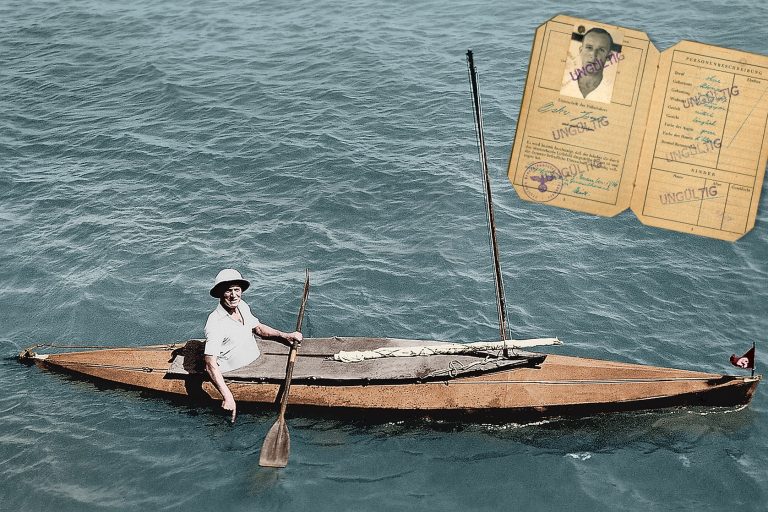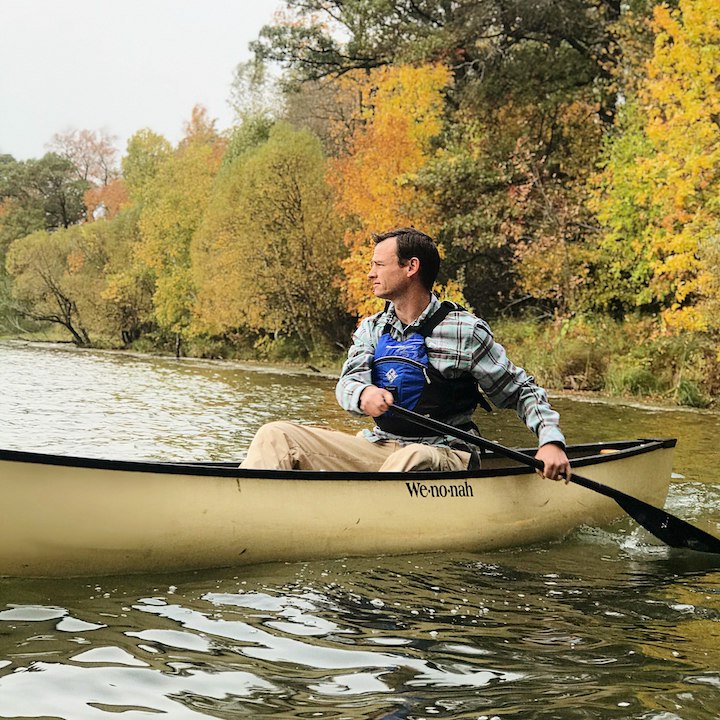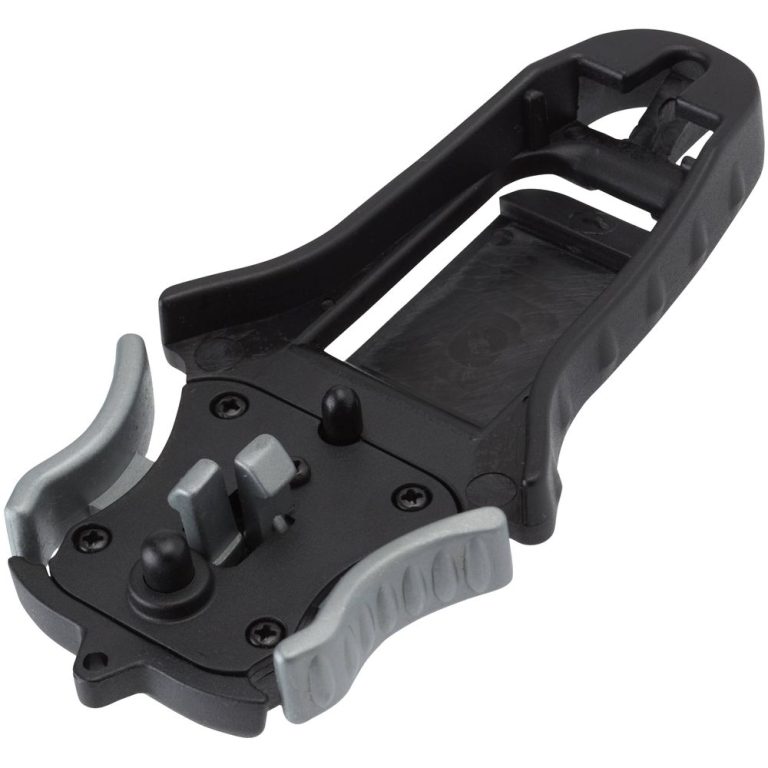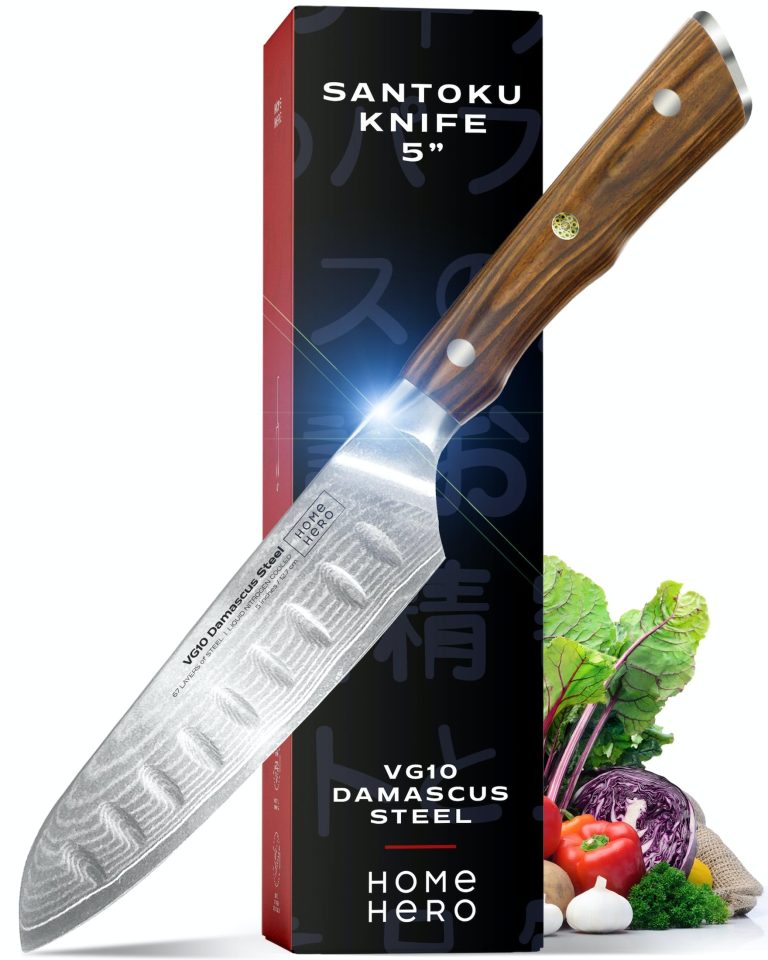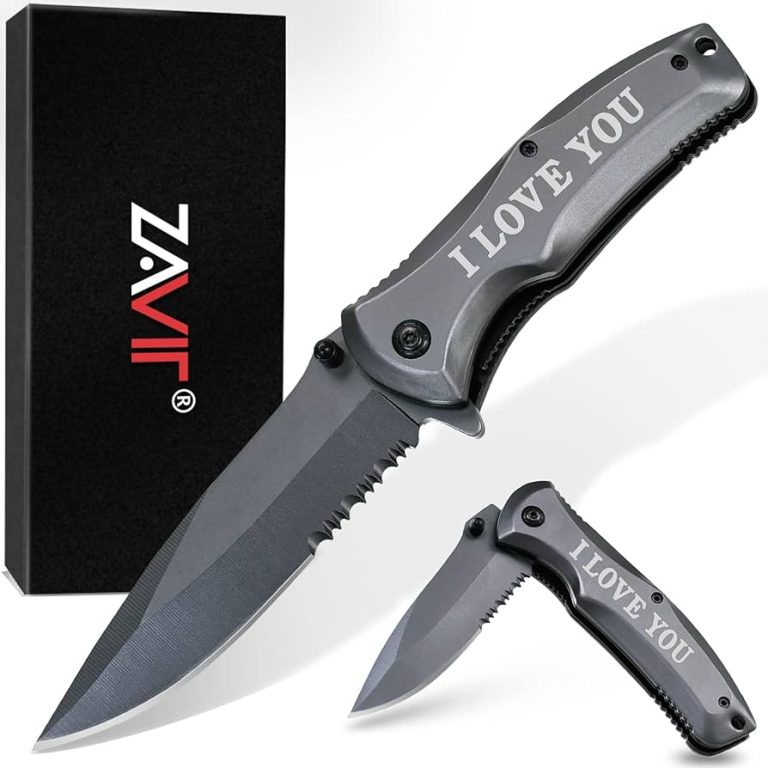Filleting Fish With a Kayaking Knife
Kayaking knives are well-suited for filleting fish efficiently, with precision and control. The slender and sharp blade allows for effortless cutting motions, ensuring a clean and professional fillet every time.
Additionally, the compact size and easy maneuverability of kayaking knives make them the perfect tool for fish cleaning while out on the water. Whether you are an avid angler or a casual kayak fisherman, having a reliable and effective kayaking knife can enhance your overall fishing experience.
We will explore the techniques and tips for successfully filleting fish with a kayaking knife, ensuring you get the most out of your catch on every kayaking adventure.
1. Choosing The Right Knife For Kayak Fishing
Filleting Fish With a Kayaking KnifeWhen it comes to kayak fishing, having the right knife for filleting fish is essential. There are several factors to consider when selecting a knife for this purpose.
| Types of knives suitable for filleting fish | Factors to consider when selecting a knife for kayak fishing |
|---|---|
|
|
When it comes to selecting a knife for filleting fish while kayaking, consider the flexibility and thinness of the blade. A flexible blade allows for precise cuts, while a thin blade helps in maneuvering around bones. Stainless steel construction ensures durability and resistance to corrosion, which is crucial when dealing with water environments.
Other factors to consider include blade length, material, grip comfort, and the availability of a sheath or knife storage option for safekeeping during kayaking trips. Portability is also important, as you’ll need a knife that is easy to carry and doesn’t take up too much space.
Choosing the right knife for kayak fishing will significantly enhance your fish filleting experience, making it efficient and enjoyable.
2. Essential Techniques For Filleting Fish On A Kayak
When filleting fish on a kayak, it is important to secure your catch to ensure safety and efficiency. Proper holding and positioning techniques are crucial in this process, allowing you to have better control and accuracy while filleting. It is essential to have a firm grip on the fish and maintain a stable position on the kayak. This can be achieved by using a non-slip mat or towel to prevent the fish from slipping away. Additionally, consider the weather and water conditions before starting the filleting process. Filleting fish in choppy waters or extreme weather conditions can be challenging, so it’s best to choose calm and stable conditions for a smoother experience. By following these techniques and considering the environmental factors, you can successfully fillet fish on a kayak using a kayaking knife.
3. Step-By-Step Guide To Filleting Fish With A Kayaking Knife
Filleting fish with a kayaking knife can be a rewarding and practical skill to have while out on the water. Before starting the filleting process, it’s essential to prepare your workspace on a kayak. Find a stable and level area to work on, ensuring you have enough space to lay out your tools and the necessary supplies.
Once your workspace is ready, begin by removing the scales and cleaning the fish. This can be achieved by using a scaling tool or the back of the knife. Remove scales in a firm, consistent motion, taking care to cover the entire fish.
Next comes the task of making precise cuts along the fish’s body to separate the fillet from the bones. Using a steady hand, make a small incision near the head and slide the knife along the backbone, gradually freeing the fillet. Repeat the process on the other side.
With the fillets separated, remove any remaining skin and pin bones. To do this, position the fillet skin-side down and insert the knife between the skin and flesh at a slight angle. Gently slide the knife along, separating the two.
4. Best Practices For Maintaining And Sharpening Your Kayaking Knife
table { border-collapse: collapse; width: 100%; }th, td { text-align: left; padding: 8px; }th { background-color: #f2f2f2; }Proper cleaning and storage techniques for your knife
- After each use, rinse the knife thoroughly with freshwater to remove any saltwater or debris that may cause corrosion.
- Dry the knife completely before storing it to prevent the growth of mold or rust.
- Apply a thin coat of lubricant or oil to the blade regularly to protect against corrosion.
- Store the knife in a dry and secure location to avoid damage.
How to maintain the knife’s sharpness for optimal performance
- Regularly sharpen the blade using a sharpening stone or a honing rod to maintain its sharpness.
- Angle the blade at approximately 20 degrees against the sharpening surface and move it along the entire length of the blade.
- Avoid using excessive force when sharpening as it may damage the knife.
- Test the sharpness by gently pressing the blade against a piece of paper. If it cuts smoothly, the knife is sharp.
Ensuring the knife stays corrosion-free in a kayak’s unique environment
| Preventive Measures | Explanation |
|---|---|
| Use a corrosion-resistant knife | Choose a knife made from stainless steel or titanium to reduce the risk of rusting. |
| Rinse with freshwater after each use | Remove saltwater and debris to minimize the chances of corrosion. |
| Dry thoroughly before storage | Avoid moisture buildup that can lead to rust formation. |
| Apply a rust inhibitor | Use a specialized rust inhibitor product to provide an additional layer of protection. |
5. Advantages And Limitations Of Filleting Fish On A Kayak
When filleting fish on a kayak, there are several advantages and limitations to consider. Filleting fish directly on a kayak offers the benefit of convenience, allowing you to clean your catch right on the water. This eliminates the need to transport the fish to shore, saving time and effort. Additionally, filleting on a kayak can provide a unique and enjoyable experience for fishing enthusiasts.
However, there are challenges and precautions to keep in mind when filleting on a kayak. The limited space and stability of a kayak can make the process more difficult and potentially dangerous. It’s important to ensure that you have a secure and stable kayak setup, with proper support and balance, to minimize the risk of accidents or injuries.
If kayak filleting is not suitable for you, there are alternative fish handling methods to consider. Some options include bringing a portable filleting table or using a fillet board onshore. These methods provide a more stable and controlled environment for filleting, ensuring safety and efficiency.

Credit: www.fieldandstream.com
6. Safety Measures And Considerations For Filleting Fish On A Kayak
When filleting fish on a kayak, it’s essential to prioritize safety to avoid accidents or injuries. Here are some tips to help you stay safe during the filleting process:
- Wear protective gear such as gloves and safety goggles to minimize the risk of cuts and eye injuries.
- Ensure you have a stable and secure workspace on your kayak, preferably with a non-slip surface.
- Keep your filleting tools, including your kayak knife, properly secured to prevent them from accidentally falling into the water.
- Always handle fish with caution, especially when using sharp tools in a confined space. Maintain a firm grip on the fish and use controlled movements to minimize the risk of injury.
- Be mindful of your surroundings. Avoid distractions while filleting, such as talking on your phone or listening to loud music, to stay focused on the task at hand.
- Consider taking a kayak safety course or seeking guidance from experienced kayakers to enhance your knowledge and skills in filleting fish on a kayak.
7. Tips And Tricks For Perfecting Your Kayak Fishing Filleting Skills
Are you an avid kayaker and fisherman looking to improve your filleting skills? Look no further! Here are some expert tips and tricks for perfecting your kayak fishing filleting skills.
1. Pro tips for achieving restaurant-quality fillets on a kayak:
- Invest in a high-quality filleting knife with a comfortable grip.
- Practice proper knife technique to ensure clean cuts and minimal wastage.
- Consider using a fillet board or clamp to secure the fish while filleting.
- Keep your filleting area clean and organized for efficient work.
- Maintain the freshness of your catch by using an ice-filled cooler or live well.
2. Advice from experienced kayak anglers on handling different fish species:
- Research the specific fish species you are targeting to understand their anatomy and bone structure.
- Learn different filleting techniques for various fish, such as the “pinbone-out” method for trout or the “Y-bone” method for pike.
- Practice makes perfect! The more you fillet different fish species, the better you’ll become.
- Don’t be afraid to ask fellow kayak anglers for their tips and tricks. Sharing knowledge and experiences can significantly enhance your filleting skills.
By following these tips and learning from experienced anglers, you’ll soon be filleting fish with ease and precision right from your kayak!
8. Popular Fish Species For Kayak Fishing And Filleting
In this blog post, we will discuss the various fish species that are commonly caught during kayak fishing and the specific techniques and considerations for filleting them using a kayaking knife.
Fish species vary in size, habitat, and characteristics, which can affect the best approach to filleting them. Here is an overview of some popular fish species sought after by kayak anglers:
| Fish Species | Characteristics | Best Filleting Technique |
|---|---|---|
| Bass (Largemouth and Smallmouth) | Relatively large, aggressive fighters | Standard filleting technique |
| Trout (Rainbow, Brown, and Brook) | Slender, delicate, and prized for their flavor | Butterfly or side filleting technique |
| Walleye | Sportfish with flaky white meat | Standard filleting technique |
| Pike | Predatory species with Y-bones | Y-bone filleting technique |
| Redfish (Red Drum) | Inshore saltwater species with firm flesh | Standard filleting technique |
| Snook | Inshore saltwater species with excellent taste | Standard filleting technique |
| Flounder | Flatfish with both eyes on one side | Cutting around bone structure technique |
| Salmon | Highly sought after for their rich flavor | Standard filleting technique |
When filleting these fish species, it is important to use a sharp and reliable kayaking knife. The techniques employed may vary, but they should prioritize efficiency, cleanliness, and minimizing waste. Practicing proper filleting techniques ensures you obtain bone-free fillets that are ready for cooking or freezing.
9. Exploring Recipes And Cooking Techniques For Kayak Caught Fish
When filleting fish with a kayaking knife, it’s crucial to explore various recipes and cooking techniques that can really enhance the flavors of the fish you catch. There are plenty of delicious recipes available that can make your kayak-caught fish the star of the show. Whether you prefer a simple grilled fillet or a more elaborate dish, the key is to use the right cooking method to suit your taste.
Grilling is a popular cooking method for fish fillets as it enhances their natural flavors. You can marinate the fillets in your favorite herbs and spices before grilling them or simply brush them with some olive oil and season them with salt and pepper. Another tasty option is pan-searing the fillets, which gives them a crispy crust while keeping the flesh tender and juicy inside.
If you’re looking for something different, you can also try baking or broiling the fish fillets. Baking them with some lemon slices and herbs creates a delicious and healthy meal. Broiling, on the other hand, adds a golden and slightly charred texture on top of the fillets.
| Cooking Method | Description |
|---|---|
| Grilling | Enhances natural flavors, can be marinated or simply seasoned with olive oil, salt, and pepper |
| Pan-searing | Creates a crispy crust with tender and juicy flesh inside |
| Baking | Healthy option, can be done with lemon slices and herbs |
| Broiling | Brings a golden and slightly charred texture to the fillets |
These are just a few examples of the many ways you can prepare fish fillets caught during your kayaking adventures. Experiment with different recipes and cooking techniques to find the ones that suit your taste preferences. With some creativity and a good kayaking knife, you can turn your catches into delicious meals that will satisfy both your hunger and your taste buds.
10. Conservation Practices For Responsible Kayak Fishing
table { border-collapse: collapse; width: 100%; }th, td { text-align: left; padding: 8px; border-bottom: 1px solid #ddd; }th { background-color: #f2f2f2; }Filleting Fish With a Kayaking Knife
When participating in kayak fishing, it is important to adopt sustainable practices to conserve fish populations and maintain the health of our ecosystems. These practices ensure the long-term enjoyment of the sport while minimizing our environmental impact.
Importance of sustainable fishing practices while kayak fishing
Kayak fishing enthusiasts must recognize the significance of sustainable fishing practices. By adhering to these practices, we can protect fish populations and preserve the delicate balance of our aquatic environments. Some key guidelines to consider include:
| Guidelines for catch and release |
|---|
| 1. Handle fish gently to minimize stress and injury. |
| 2. Use barbless hooks to facilitate easy hook removal. |
| 3. Keep fish in the water as much as possible while releasing. |
Additionally, proper disposal of fish waste while on a kayak is crucial. To prevent contamination and maintain cleanliness, it is important to:
- 1. Use appropriate fish storage containers or bags to prevent leakage.
- 2. Dispose of fish waste in designated areas or double bag it for proper disposal onshore.
By following sustainable fishing practices and responsibly disposing of fish waste, we can actively contribute to the conservation of our aquatic ecosystems. Let us enjoy the thrill of kayak fishing while ensuring its long-term sustainability.
Conclusion
Filleting fish with a kayaking knife is a skill that offers unique advantages for outdoor enthusiasts. Not only does it allow you to combine two exciting activities, but it also provides a practical solution for enjoying freshly caught fish on the go.
With the right technique and equipment, you can confidently navigate the waters, catch your dinner, and expertly prepare it without the need for a traditional filleting table. The mobility and convenience of using a kayaking knife make it a game-changer for fishermen who value efficiency and adaptability.
While safety precautions are crucial, once you master the art of filleting fish while kayaking, you’ll be able to enjoy a delicious meal straight from nature’s bounty. So, next time you set out on a kayaking adventure, don’t forget to bring along your trusty filleting knife and savor the rewards of this exciting and practical combination of skills.
Happy filleting and happy kayaking!


